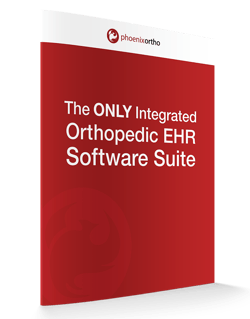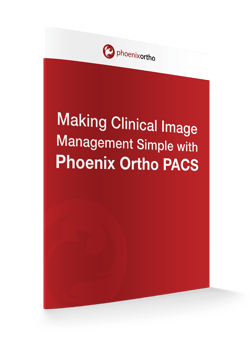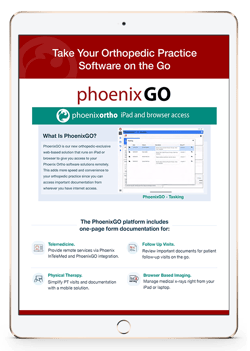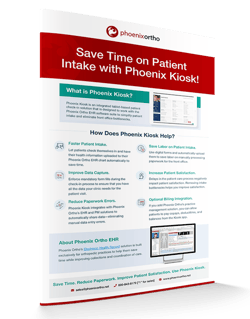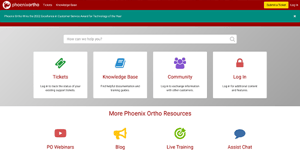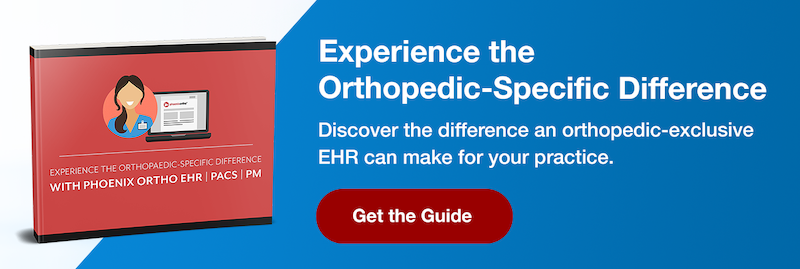In orthopedic practice management, the terms patient engagement and patient satisfaction are sometimes used interchangeably. Advice articles might conflate the two concepts and treat them as the same metric.
However, patient engagement is not the same as patient satisfaction. While both are important for driving repeat patient visits, there is a distinction between the two terms that needs to be considered.
In this post, we will answer questions like “What is the difference between patient engagement and patient satisfaction? Which is more important for your practice? How can you increase engagement and satisfaction alike?”
What Is Patient Engagement?
Patient engagement can be defined as a measure of how actively a patient participates in their own health management.
For example, let’s say there are two patients: John Doe and Jane Doe. John only visits a doctor once every few years when he has a serious and hard-to-ignore health problem. Meanwhile, Jane attends regular physicals, watches her diet, and consults with her doctor for advice on preventative measures she can take to promote her health.
In this example, John would have a low level of engagement with his healthcare, while Jane would be considered highly engaged.
Why Is Patient Engagement Important?
Patient engagement is considered important for helping to improve patient health. An engaged patient is more likely to proactively seek care and maintain their health than a disengaged one is. This has a secondary benefit for the clinic of making it more likely that the patient will return for further care (assuming they are satisfied with the care they’ve received).
Patients who are engaged with care are also more likely to be candid and thorough with the information they share about their health histories. This helps care providers offer a higher quality of care that, subsequently, can impact patient satisfaction.
What Is Patient Satisfaction?
Patient satisfaction is a subjective measure of how “happy” a patient is with the care they’ve received from a healthcare provider. This is often impacted directly by the patient experience at a care facility.
Some factors that impact patient experience and satisfaction include:
- The relationship between the physician and the patient;
- How long patient check-in processes take;
- Delays between initial check-in or appointment time and seeing the physician;
- The amount of time spent with a care provider; and
- Efficacy of the treatment or immediate sensation of relief.
Why Patient Satisfaction Matters
Patient satisfaction is important because it affects how likely a patient is to return to the same physician for treatment in the future. It can also affect whether the patient will recommend the practice to their peers. Satisfied patients can lead to an increase in revenue as new patients are recommended to the practice.
Satisfaction is also an important metric in the Consumer Assessment of Healthcare Providers and Systems (CAHPS) survey administered by the Agency for Healthcare Research and Quality (AHRQ). This survey, in turn, is sometimes used by the Centers for Medicaid Services (CMS) for their public reporting and reimbursement programs.
Patient Satisfaction Vs. Patient Engagement
To put it simply, the difference between patient satisfaction vs. patient engagement is that satisfaction measures how happy the patient is with the clinic while engagement measures how involved the patient is in their own healthcare. Which is more important to your clinic?
The answer may vary depending on what your goals are for your orthopedic clinic, current patient engagement and satisfaction levels, and what resources you have available.
For example, if you have a large customer base, but the majority of those patients only come in if they have a severe musculoskeletal injury, then focusing on improving engagement would be important. Providing health advice that encourages patients to come back for more visits or showing how important it is to proactively protect their health with regular checkups or preventative treatment regimens could help increase clinic revenue.
Meanwhile, if you have a small customer base or are in a highly competitive area with other orthopedic clinics, it might be better to focus on increasing patient satisfaction. This could include doing things like finding ways to minimize patient wait times, offering remote visit services via telemedicine solutions, or working on building cordial relationships with patients.
Ideally, you would want to increase both patient satisfaction and engagement since this would provide the biggest long-term boost to your practice’s revenue.
Tools to Help Your Orthopedic Clinic Improve Patient Engagement
If you want to increase patient engagement, there are many tools you could use. Examples of strategies and resources you could use to increase engagement include:
- Automated Messaging Software. One way to keep patients engaged with their care is to send regular reminders so they’re less likely to miss appointments or forget about important medications or treatments they need. Automated messaging systems can help orthopedic physicians send out regular updates and information without them having to spend hours punching in patient contact information and sending personalized messages to each and every last one of them.
- Community Events and Publications. Hosting a community event to raise awareness of health issues related to orthopedics can help physicians increase engagement among potential patients. Alternatively, orthopedists might create advertisements or articles for local publications to help raise awareness. For example, an orthopedist might work with a school to put an article about common sports injuries and how to identify ones that need a specialist’s attention in the school paper. Or, they may volunteer some time to make a presentation for the school’s sports teams.
- Telemedicine Solutions. One of the biggest barriers to patient engagement is the inconvenience of seeking care for what the patient believes to be minor issues. Without a severe injury or a history of musculoskeletal health issues, a patient might feel that a trip to the orthopedist is more trouble than it is worth. To alleviate this issue, orthopedists can use telemedicine solutions to allow potential patients to submit reports about their condition from a smartphone app or their web browser. This can allow orthopedic physicians to remotely diagnose common problems without forcing the patient to make a trip.
- Take a Consultative Approach to Healthcare. Many people don’t understand the purpose of the various tests and treatments that an orthopedic physician will recommend. Without this understanding, it’s hard to engage with the physician treatment recommendations. One way to improve this is for physicians to take a consultative approach to healthcare—explaining what each test or treatment is for a bit and why they’re necessary. This helps ensure patients are more informed and engaged with their treatment.
These are just a few suggestions for increasing patient engagement in your orthopedic practice.
Does your practice need help improving engagement or streamlining processes? Reach out to Phoenix Ortho to learn how you can use our orthopedic-exclusive platform to enhance your practice’s workflows.
Schedule a 1:1
Get in touch with Phoenix Ortho to learn more about how you can save time, money, and mouse clicks with an orthopedic-specific EHR.





